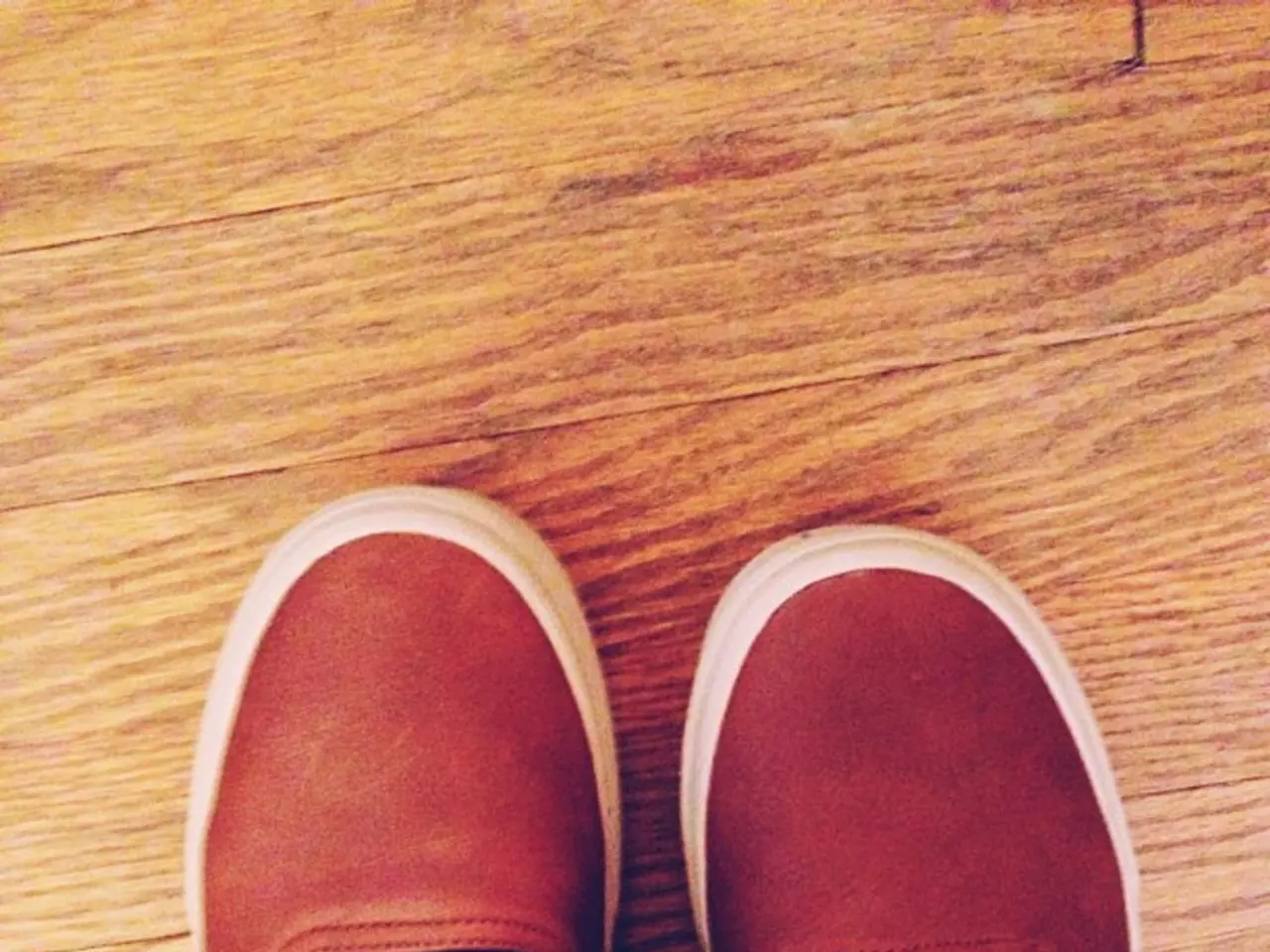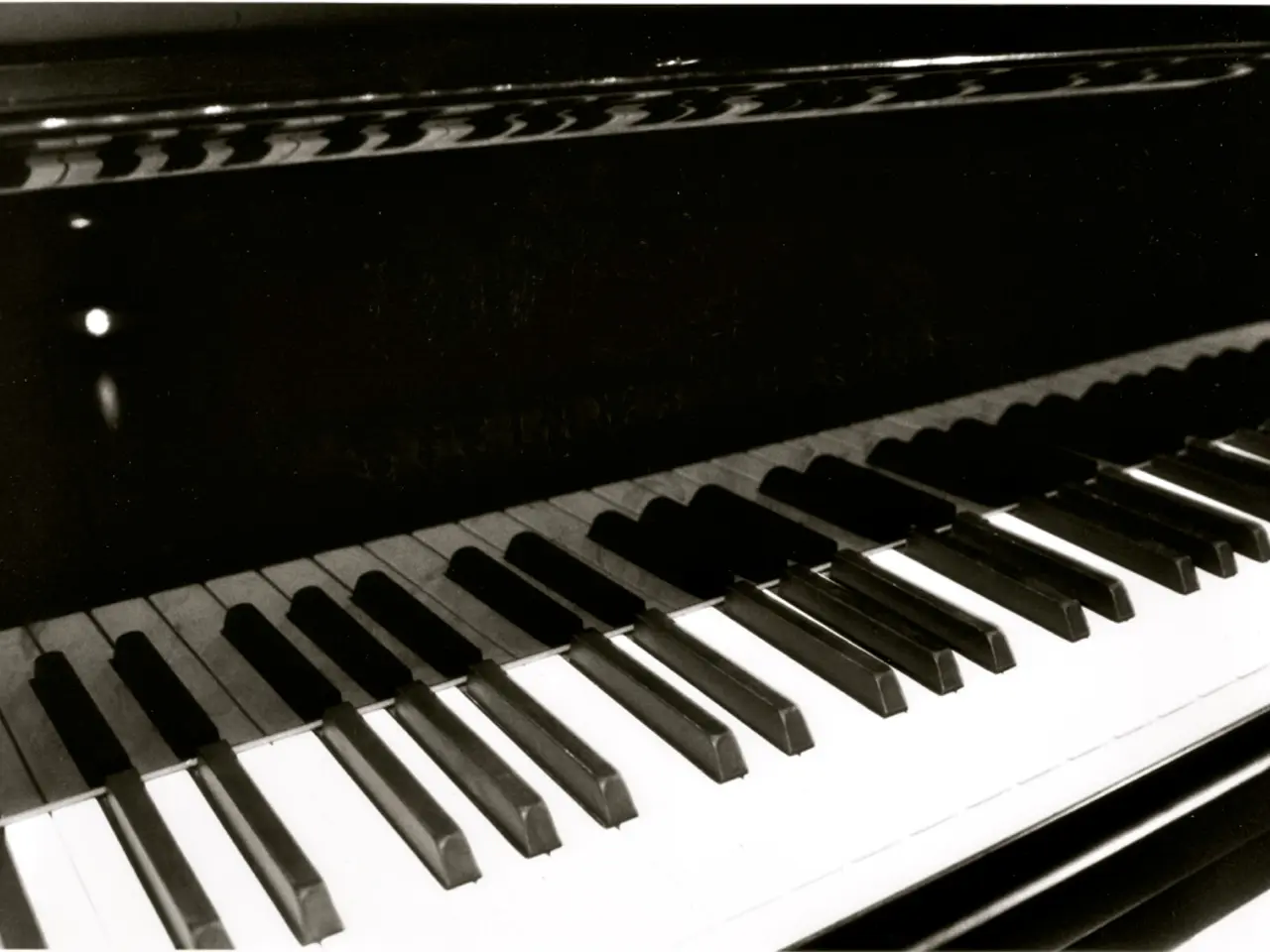Ancient Leather Sandal Uncovers Large Foot Size of Roman Soldier
The recent discovery of oversized leather shoes at the Roman fort Magna, located near Hadrian's Wall, is offering intriguing insights into Roman footwear and life on the Roman frontier.
## Insights into Roman Footwear
The shoes, measuring an impressive 11.8 inches (30 cm) in length, are significantly larger than the average Roman shoe found at nearby sites such as Vindolanda. This suggests that individuals with larger feet were present at Magna or that these shoes served a specific purpose [1][3]. The shoes, made of durable leather, have survived for almost two millennia due to the anaerobic conditions in the waterlogged mud [1][2].
The shoes were constructed with multiple layers of leather connected with thongs, stitches, and hobnails to form the sole [4]. This discovery provides new insights into Roman cobbling techniques.
## Insights into Life on the Roman Frontier
The presence of these large shoes might suggest that larger or more robust soldiers were stationed at Magna. Archaeologists are investigating which regiments might have been stationed there to explain the unusual size of the footwear [3].
The variety of footwear found in the area, including sandals and boots, suggests a diverse range of activities and occupations among the Roman population living near Hadrian's Wall [4].
The preservation of shoes in ditches could provide insights into waste management and resource use on the Roman frontier. It also highlights the importance of footwear in daily life, given the harsh conditions and diverse activities undertaken by Roman soldiers and civilians [2][4].
Another fascinating find is a marble make-up palette, indicating the presence of female citizens at Magna [5]. This, coupled with the discovery of a fine-toothed wooden comb, suggests that a larger settlement may have existed at the junction of Maiden Way and Stanegate [6].
The research team's findings this year provide a more comprehensive picture of life at Magna and the surrounding area during the Roman era. The wooden tent pegs and pieces of pottery discovered this year add to the understanding of life on the Roman frontier.
References:
[1] https://www.archaeology.org/issues/533-1912/news/roman-shoes-magna-hadrians-wall [2] https://www.bbc.co.uk/news/uk-england-tyne-57331757 [3] https://www.theguardian.com/uk-news/2021/aug/17/roman-shoes-offer-clues-to-life-on-hadrians-wall [4] https://www.archaeology.org/issues/533-1912/news/roman-shoes-magna-hadrians-wall [5] https://www.bbc.co.uk/news/uk-england-tyne-57331757 [6] https://www.theguardian.com/uk-news/2021/aug/17/roman-shoes-offer-clues-to-life-on-hadrians-wall
The discovery of these oversized leather shoes at Magna might offer potential connections between Roman sports and life on the frontier, as larger footwear could indicate larger or more robust individuals who might have been involved in strenuous activities such as military combat or athletics.
The research on these shoes, combined with findings like the marble makeup palette and fine-toothed wooden comb, could also provide new insights into the science of Roman leatherworking and craftsmanship, considering the unique leather shoes and their remarkable preservation for nearly two millennia.








